Study on the Stability of Accumulation Using a Slope Shaking Table Test during Earthquake Action
Abstract
:1. Introduction
2. Engineering Background
2.1. Physical Geography
2.2. Overview of Geology and Seismology
3. Materials and Methods
3.1. Test Equipments
3.2. Derivation of Similarity Constants
3.3. Similar Materials and Ratios for Slope Modeling
3.4. Construction of Modeled Slopes
- (1)
- Filling of lower bedrock. Put the simulated material into the mixer, add water and mix well, then fill into the model box, tamping every 5 cm, for a total of 40 cm, at a bedrock inclination angle of 34°. In order to analyze the displacement change of the accumulation layer and to ensure the quality of the acquired images, the accumulation layer was stained with ink, stirred well, and then dried, while a white gypsum block was used as a scattering marking point, as shown in Figure 5.
- (2)
- Accumulation layer slopes and scattered marker fill. After drawing the shape and geometry of the side slopes on the sidewalls with a marker pen, the accumulation layer simulation material was poured into the model box with modeled slope footings of 19° and 36°. The acceleration sensors were buried when the fill was compacted at 5 cm intervals to the appropriate sensor elevation. When the accumulation layer was filled up to 0.6 cm from the bottom, the stained accumulation layer was uniformly spread on one side of the plexiglass surface, while gypsum was randomly spread on its surface in order to analyze the displacement field of the modeled slopes by the DIC processing technique.
- (3)
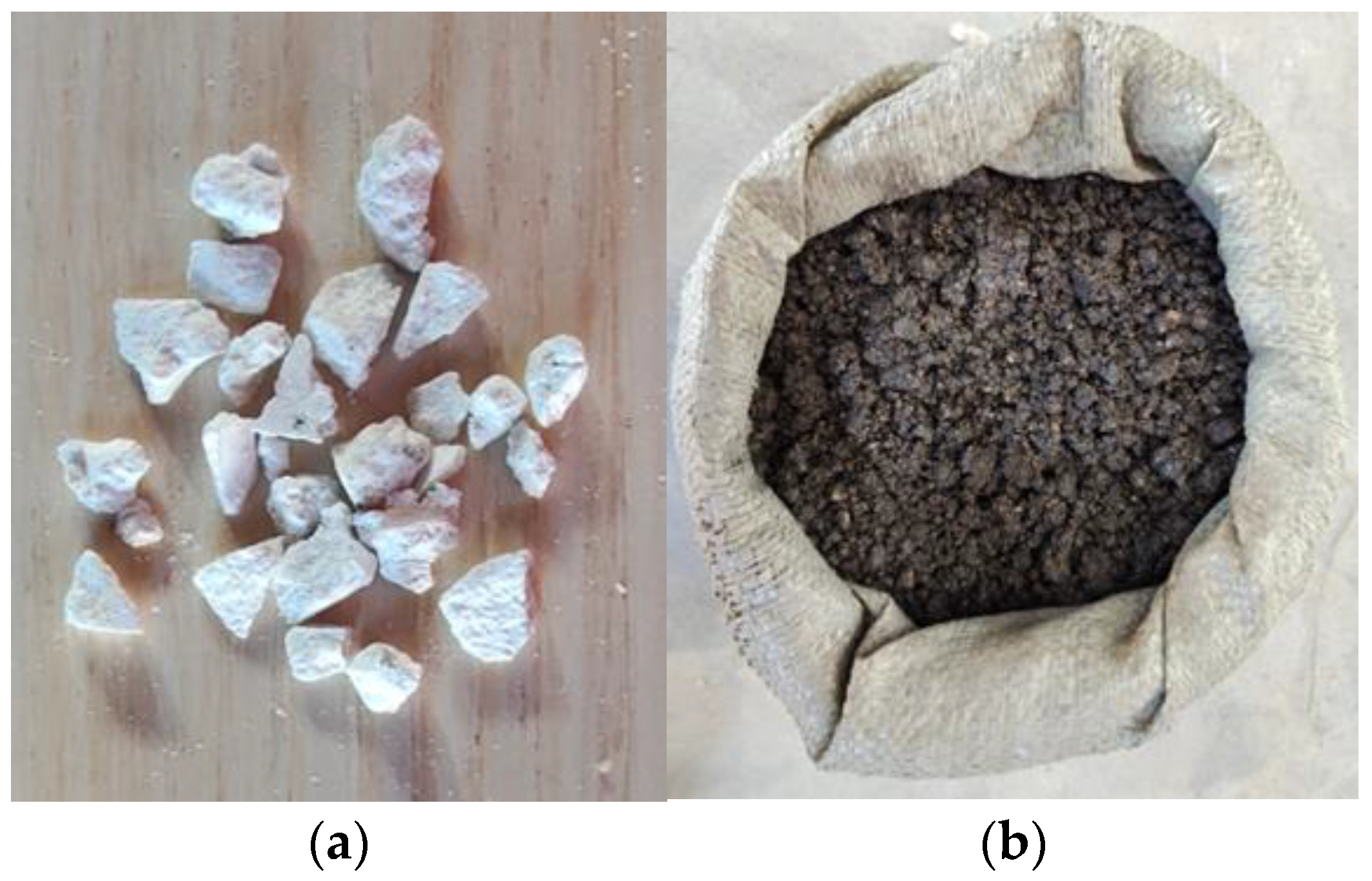

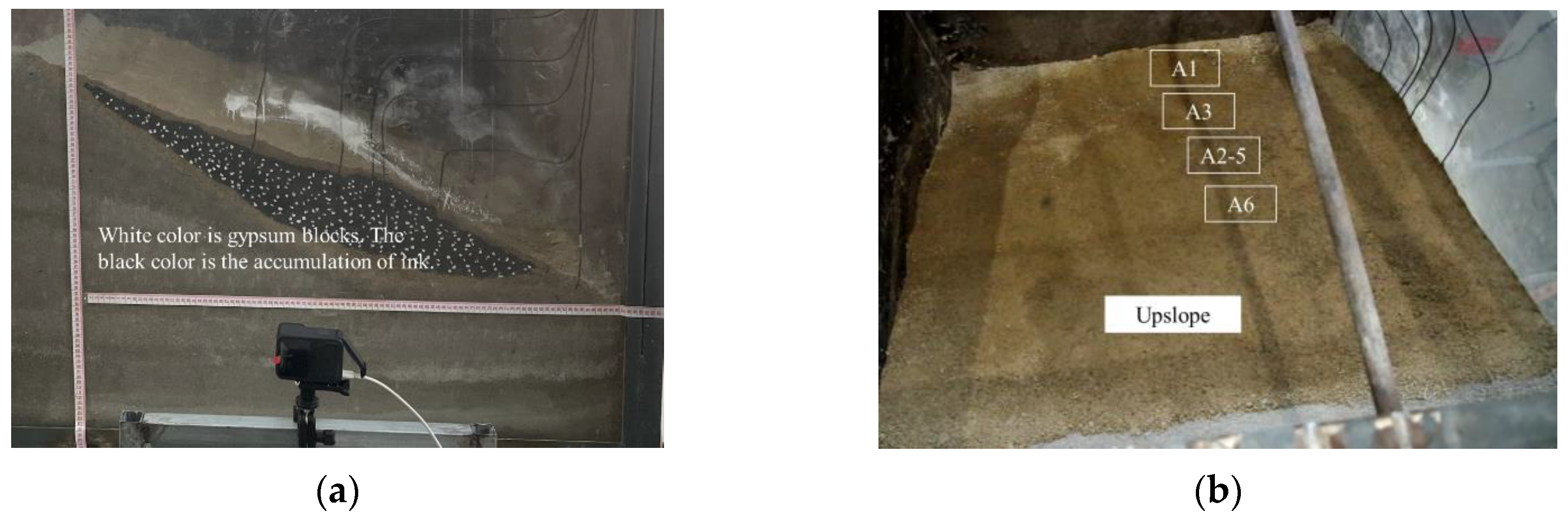

3.5. Arrangement of Measurement Points
3.6. Principles of Digital Image Speckle Technology
3.7. Seismic Wave Loading Program for the Test Process
4. Results
4.1. Slope Test of the Accumulation
4.1.1. Acceleration Response Rules
4.1.2. Model Slope Displacement Field and Strain Field Response
4.2. Anti-Slide Pile Reinforcement Test
4.2.1. Acceleration Response Rules
4.2.2. Pile Bending Moment Response Rules
4.2.3. Model Slope Displacement Field and Strain Field Response
5. Comparison of Test Results of Accumulation Slope and Anti-Slide Pile Reinforcement
5.1. Acceleration Response
5.2. Model Slope Displacement Field and Strain Field Response
6. Conclusions
- (1)
- By analyzing the amplification coefficient of the accelerometer in the soil under different peak accelerations and relative elevations, we found that the amplification coefficient of the measuring points A1–A6 of the accumulation slope reaches the maximum at a peak acceleration of 0.2 g, and its values are between 1.25 and 1.3, respectively. Furthermore, it shows a decreasing trend at a peak acceleration of 0.3 g, and its corresponding values are, respectively, between 1.1 and 1.2. In the anti-slip pile reinforcement test, due to the obstruction of the anti-slip pile, the damping of the soil around the pile increases. As the peak value of the seismic wave input increases, the amplification factor shows an overall decreasing trend. A1–A6 correspond to a peak acceleration of 0.3 g. The amplification factors are all close to 1.
- (2)
- According to the analysis of the displacement field and strain field, it is concluded that the accumulation slope mainly undergoes the earthquake-induced stage, tensile failure stage, creeping deformation stage, and overall instability stage under different peak accelerations. In the anti-slide pile reinforcement test, the slope showed different dynamic response characteristics under the same conditions, and mainly experienced the earthquake-induced stage, tensile failure stage, lower sliding surface formation stage, and soil shedding stage in front of the pile.
- (3)
- According to the distribution law of the bending moment of the pile along the buried depth, the bending moment of the anti-slide pile first increases and then decreases with the increase in acceleration, and the reverse bending point of the pile appears at five times the pile diameter below the soil surface; the maximum bending moment of the middle pile corresponding to a peak acceleration of 0.05–0.3 g is between 7.5 N·m and 47 N·m, respectively, and the maximum bending moment of the outer pile is between 6.5 N·m and 52 N·m, respectively. The outer pile is susceptible to the action of inertial force due to its proximity to the plexiglass, and the bending moment generated by the middle and lower part of the outer pile is large due to the geological conditions of soft at the top and hard at the bottom.
- (4)
- Comparing and analyzing the acceleration time history curves of the accumulation slope and the anti-slide pile under the acceleration peak of 0.25 g, it can be seen that the acceleration peak value of each measurement point of the accumulation slope is greater than that of the anti-slide pile, and the difference between their peaks is about two times. At the same time, the displacement and strain fields of each stage of the two groups of tests were compared, and it was found that the displacement and strain values of the accumulation slope test were greater than those of the anti-slide pile reinforcement test, and the horizontal displacement difference at the top of the slope was the most significant, reaching 2.3 times at the maximum.
7. Limitations
Author Contributions
Funding
Data Availability Statement
Conflicts of Interest
References
- Zhao, F.; Yu, S.; Li, B.; Shi, Z. Research Advances on Large-Scale Shaking Table Test for Rock Slopes under Earthquake. Earth Sci. 2022, 47, 4498–4512. [Google Scholar]
- Keefer, D.K. Landslides caused by earthquakes. Geol. Soc. Am. Bull. 1984, 95, 406–421. [Google Scholar] [CrossRef]
- Shimizu, Y.; Aydan, Ö.; Ichikawa, Y.; Kawamoto, T. A model study on dynamic failure modes of discontinuous rock slopes. In Proceedings of the International Symposium on Engineering in Complex Rock Formations, New Delhi, India, 14–17 April 1988; pp. 183–189. [Google Scholar]
- Xu, Q.; Feng, W.; Xiao, R.; Zuo, Y. Study of the Seismic Reponse of Slopes by Physical Modeling. Adv. Eng. Sci. 2009, 41, 266–272. [Google Scholar]
- Liu, Y.; Deng, H. Study on physical simulation vibration test of the anti-inclined slab-rent structure rock slope. J. Chengdu Univ. Technol. 2011, 38, 413–421. [Google Scholar]
- Yang, G.; Wu, F.; Qi, S.; Dong, J. Shaking Table Model Test on Dynamic Response Characteristics and Failure Mechanism of Antidip Layered Rock Slope. Chin. J. Rock Mech. Eng. 2012, 31, 2214–2221. [Google Scholar]
- Liu, H.; Wang, L.; Hou, H. Effect of Frequency of Seismic Wave on Acceleration Response of Rock Slopes. Chin. J. Rock Mech. Eng. 2014, 33, 125–133. [Google Scholar]
- Liu, J.; Deng, H.; Ling, D.; Guo, X.; Meibeng, G. Shaking table tests and throwing phenomenon of deposit slopes under earthquakes. Chin. J. Geotech. Eng. 2014, 36, 307–311. [Google Scholar]
- Sun, Z.; Guo, A.; Tian, H. Surface deformations and failure mechanisms of deposit slope under seismic excitation. Rock Soil Mech. 2015, 36, 3465–3472. [Google Scholar]
- Yang, B.; Zou, H.; Liang, J.; Zheng, D. Dynamic response and failure characteristic of accumulation slope under action of different kinds of seismic load. China Civ. Eng. J. 2019, 52, 202–210. [Google Scholar]
- Xu, J. Shaking table model tests on embedded Anti-slidee piles. Chin. J. Geotech. Eng. 2012, 34, 1896–1902. [Google Scholar]
- Lai, J.; Liu, Y.; Fang, Y.; Wang, Y. Shaking Table Test for Antiseismic Behavoir of Embedded Anti-Slidee Pile and Numerical Simulation. Chin. J. Rock Mech. Eng. 2013, 32, 4165–4173. [Google Scholar]
- Liu, C.; Liang, Y.; Li, X. Study of Shaking Table test for High Slope Retaining Structure on Highly Seismic Region. Chin. J. Rock Mech. Eng. 2014, 33, 3798–3802. [Google Scholar]
- Liu, C.; Zhang, Y. Shaking table test and analysis of double row pile retaining structure. China Civ. Eng. J. 2013, 46, 190–195. [Google Scholar]
- Feng, S.; Ai, H.; Feng, W. Seismic Optimum Design and Experimental Research on Anti Slide Pile with Pre-stressed Anchor Cable. Sci. Technol. Eng. 2018, 18, 248–255. [Google Scholar]
- Fan, G.; Zhang, J.-J.; Qi, S.-C.; Wu, J.-B. Dynamic response of a slope reinforced by double-row anti-slideing piles and pre-stressed anchor cables. J. Mt. Sci. 2019, 16, 226–241. [Google Scholar] [CrossRef]
- Fang, K.; Tang, H.; Li, C.; Su, X.; An, P.; Sun, S. Centrifuge modelling of landslides and landslide hazard mitigation: A review. Geosci. Front. 2022, 14, 101493. [Google Scholar] [CrossRef]
- Abdoun, T.; Abe, A.; Bennett, V.; Danisch, L.; Sato, M.; Tokimatsu, K.; Ubilla, J. Wireless real time monitoring of soil and soil-structure systems, Embankments, Dams, and Slopes. In Lessons from the New Orleans Levee Failures and Other Current Issues; ASCE Library: Lawrence, KS, USA, 2007; pp. 1–10. [Google Scholar]
- Liu, J.; Liu, F.; Kong, X.; Yongsheng, L. Application of PIV in large-scale shaking table model tests. Chin. J. Geotech. Eng. 2010, 32, 368–374. [Google Scholar]
- Fang, K.; Miao, M.; Tang, H.; Jia, S.; Dong, A.; An, P.; Zhang, B. Insights into the deformation and failure characteristic of a slope due to excavation through multi-field monitoring: A model test. Acta Geotech. 2023, 18, 1001–1024. [Google Scholar] [CrossRef]
- Lu, H.; Cary, P.D. Deformation measurements by digital image correlation: Implementation of a second-order displacement gradient. Exp. Mech. 2000, 40, 393–400. [Google Scholar] [CrossRef]
- Blaber, J.; Adair, B.; Antoniou, A. Ncorr: Open-source 2D digital image correlation matlab software. Exp. Mech. 2015, 55, 1105–1122. [Google Scholar] [CrossRef]
- Yang, C.; Fu, X.; Han, Y. Shaking Table Model Tests on the Seismic Response of a High and Steep Rock Slope. China Earthq. Eng. J. 2016, 38, 775–782+807. [Google Scholar]
- Yang, Z.; Liu, S.; Tian, X.; Hu, Y.; Ren, S. Dynamic stability and failure mode of slopes with overlying weak rock mass under frequent micro-seismic actions. Chin. J. Geotech. Eng. 2019, 41, 2297–2306. [Google Scholar]
- Men, Y.; Li, N.; Gao, O.; Li, J.; Liu, X. Seismic behavior of the landslide supported by micropiles. Chin. J. Rock Mech. Eng. 2018, 37, 2144–2151. [Google Scholar]
- Yao, L.; Xu, G.; Gao, Z.; Li, Z. Large-Scale Shaking Table Model Test Study on Dynamic Characteristics and Dynamic Responses of Slope. Chin. J. Rock Mech. Eng. 2008, 27, 624–632. [Google Scholar]
- Fan, G.; Fu, X.; Wang, Z.; Tian, H. Energy identification method for dynamic failure mode of bedding rock slope with soft strata. Chin. J. Geotech. Eng. 2016, 38, 959–966. [Google Scholar]

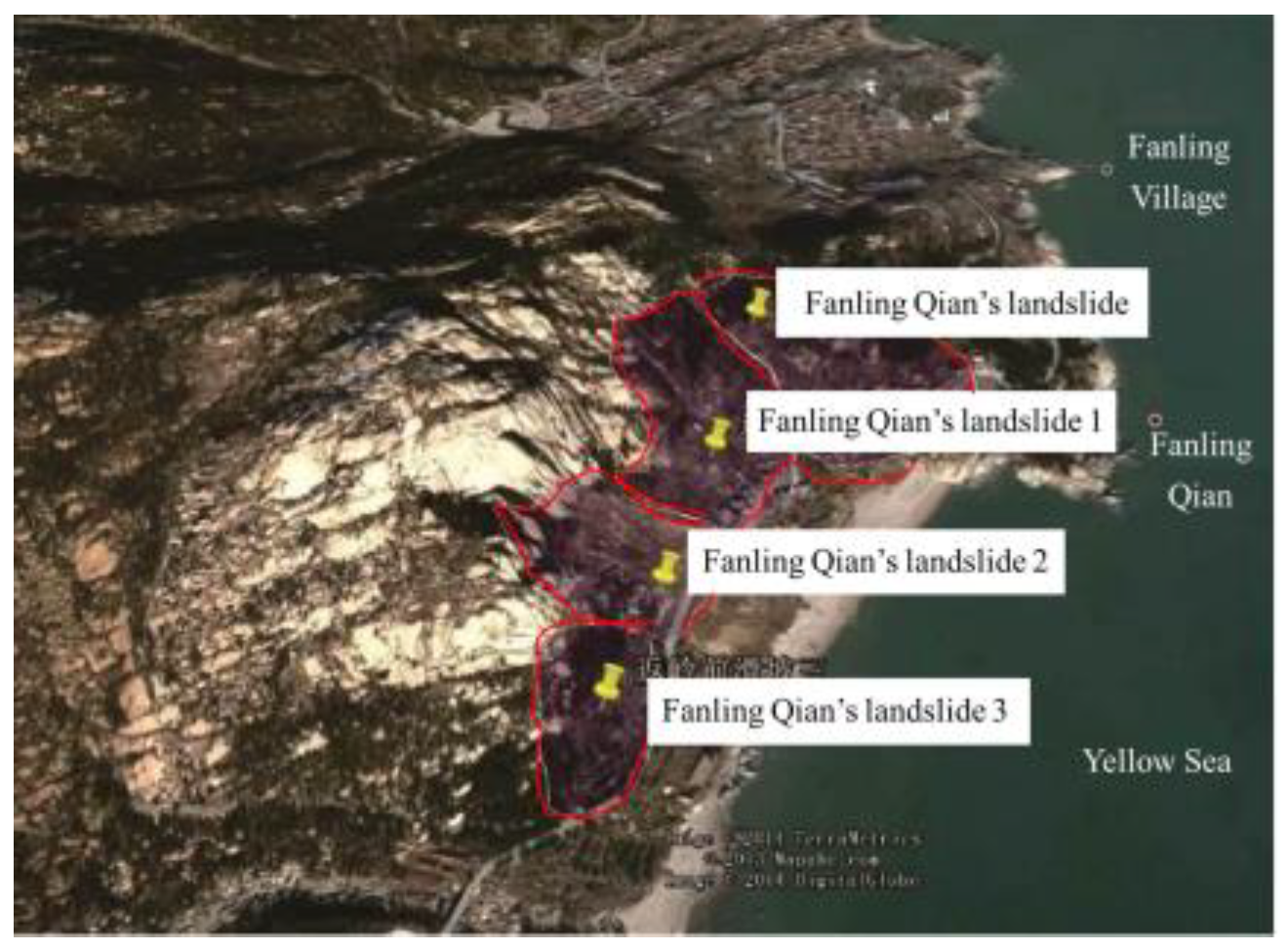

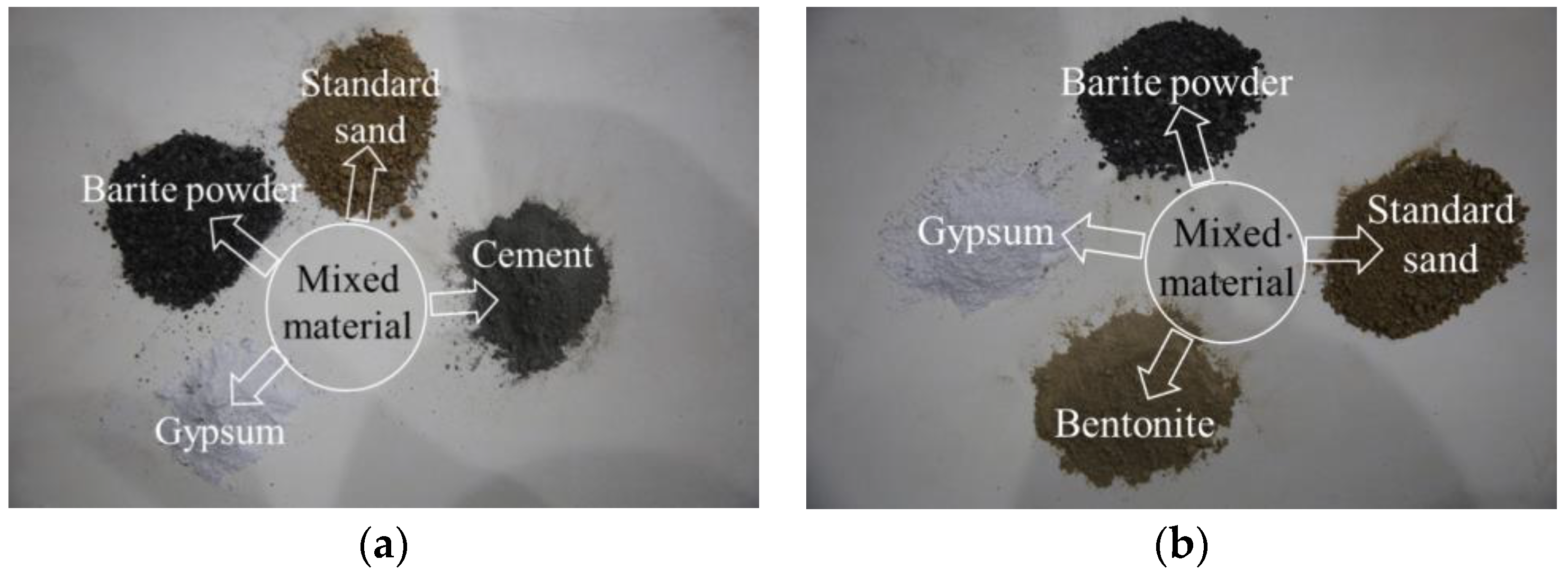
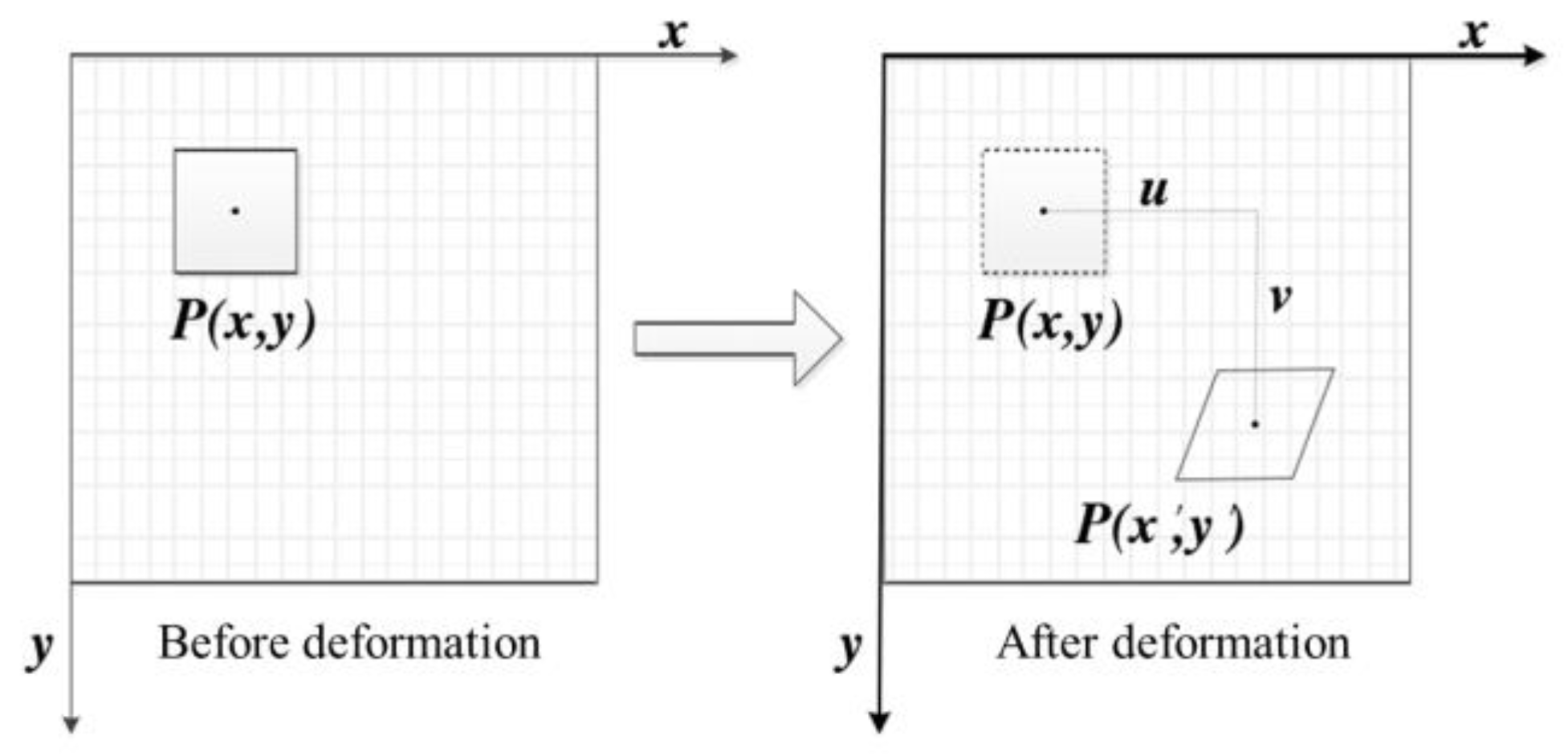

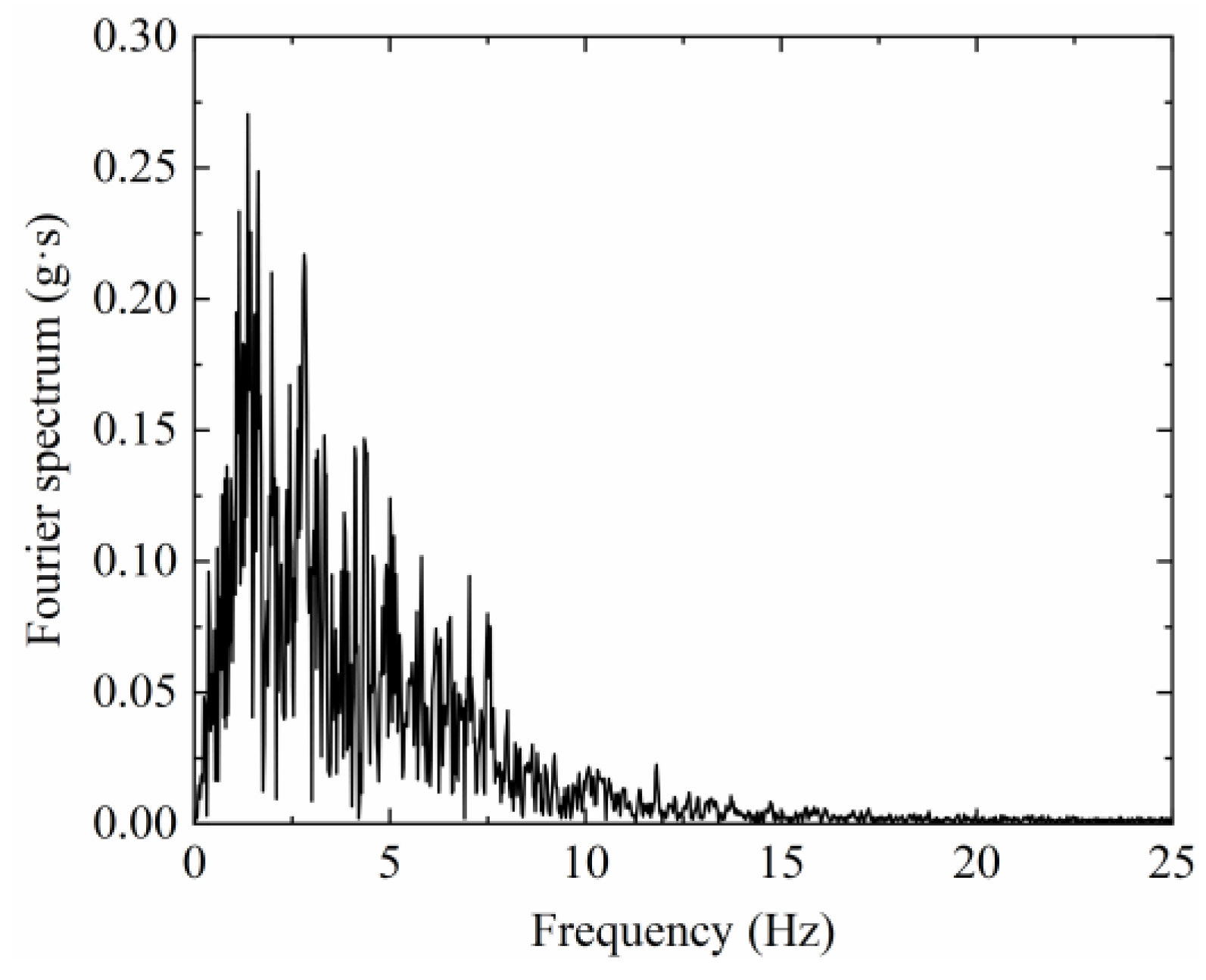
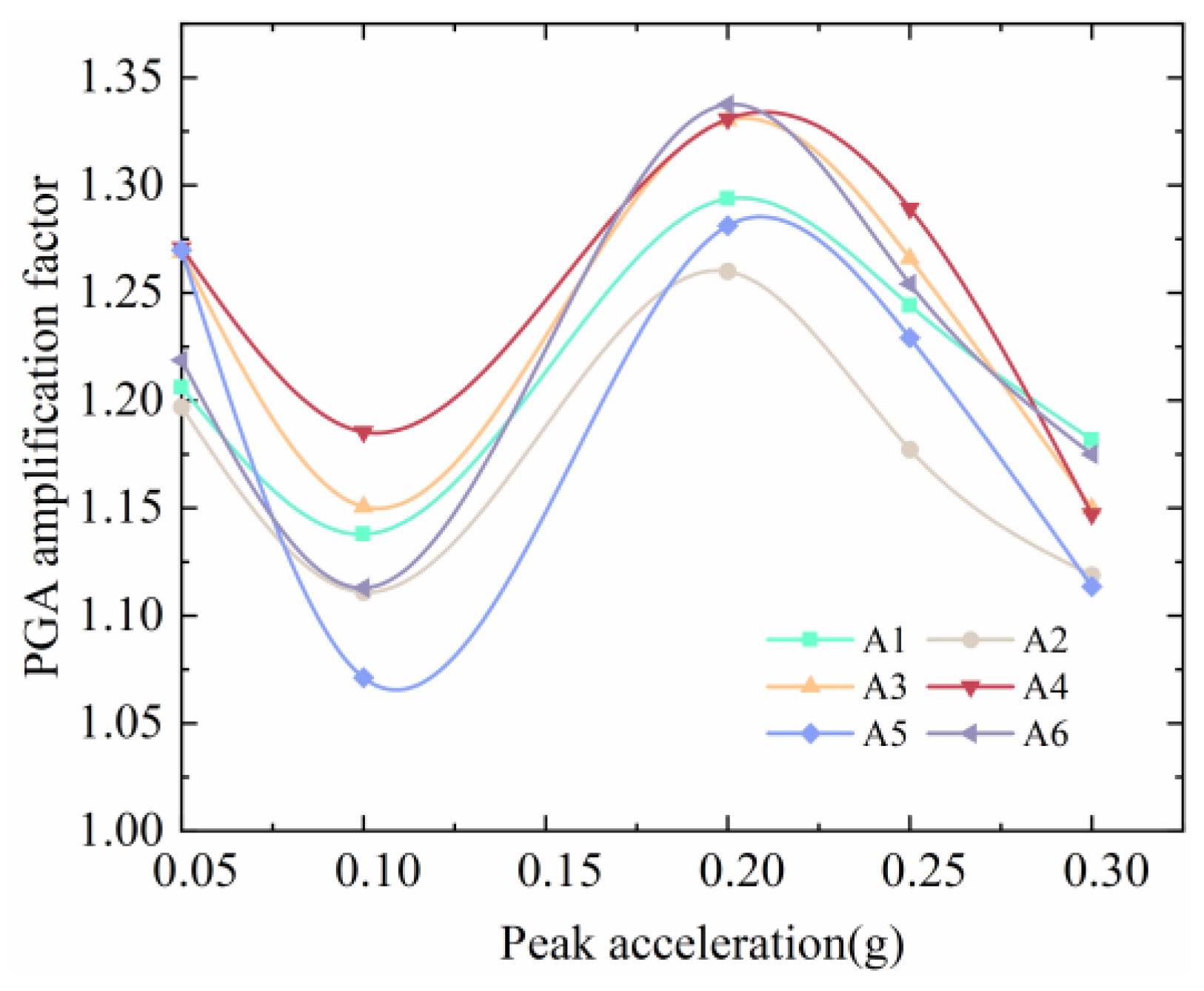
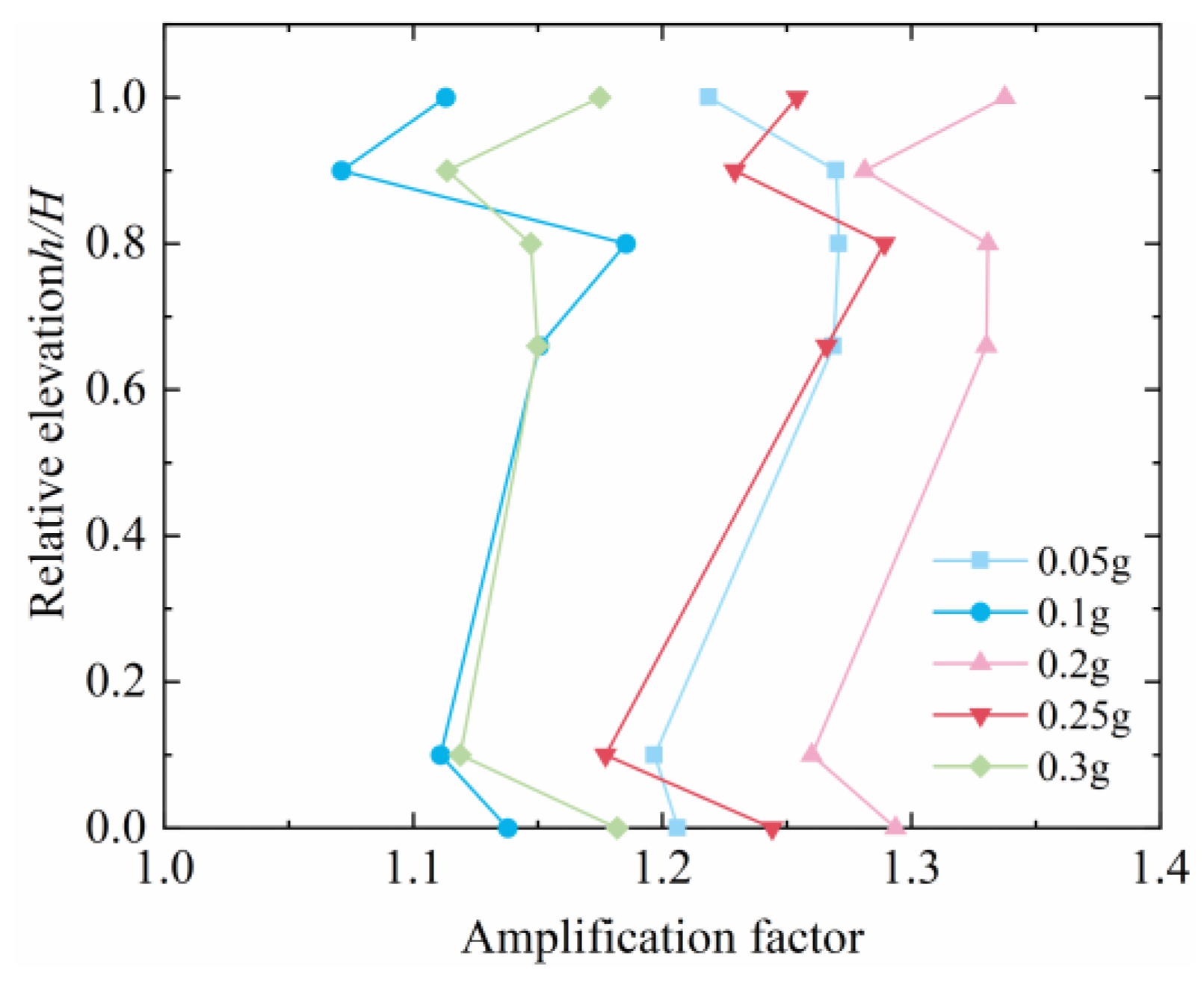




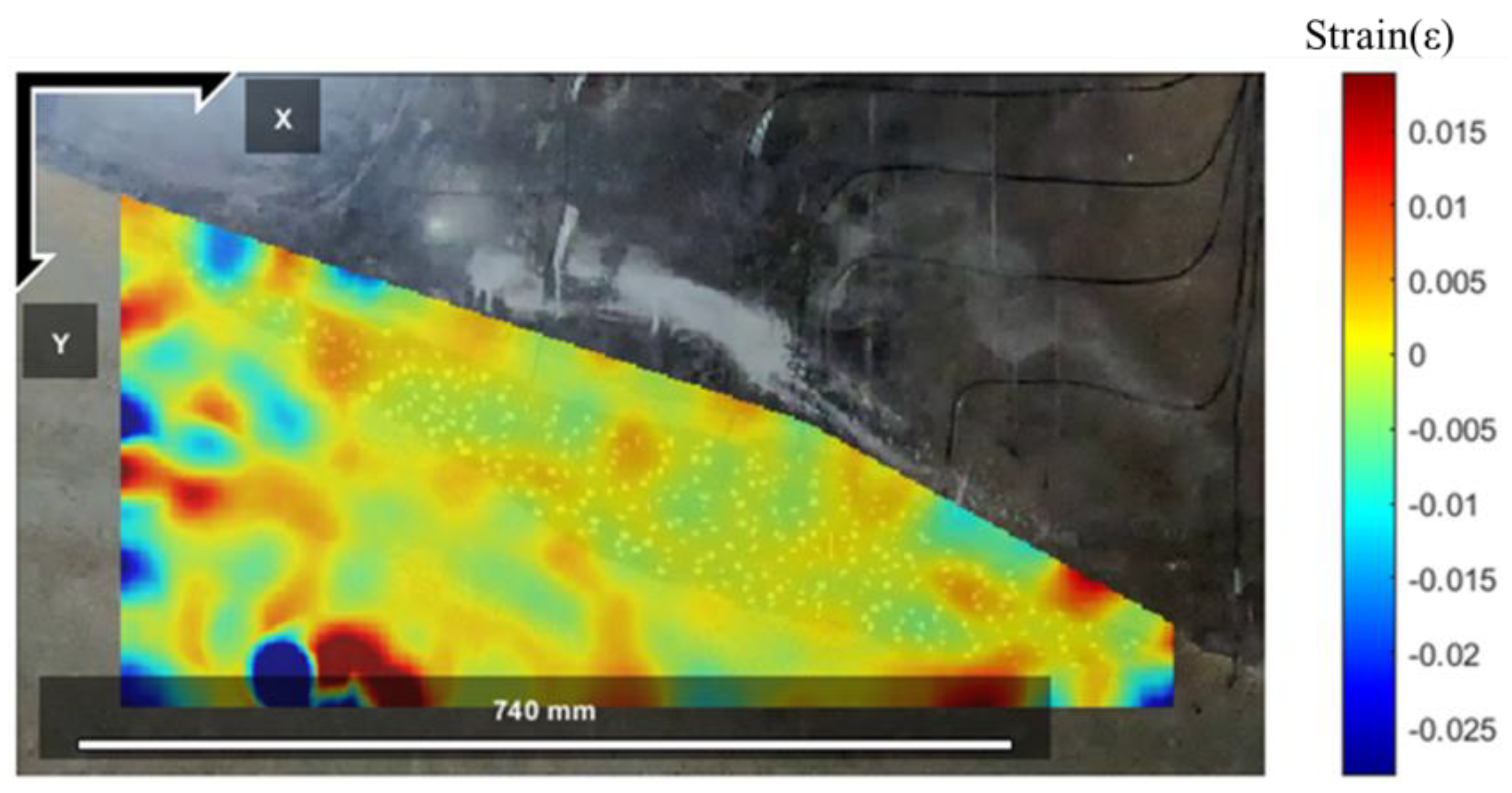


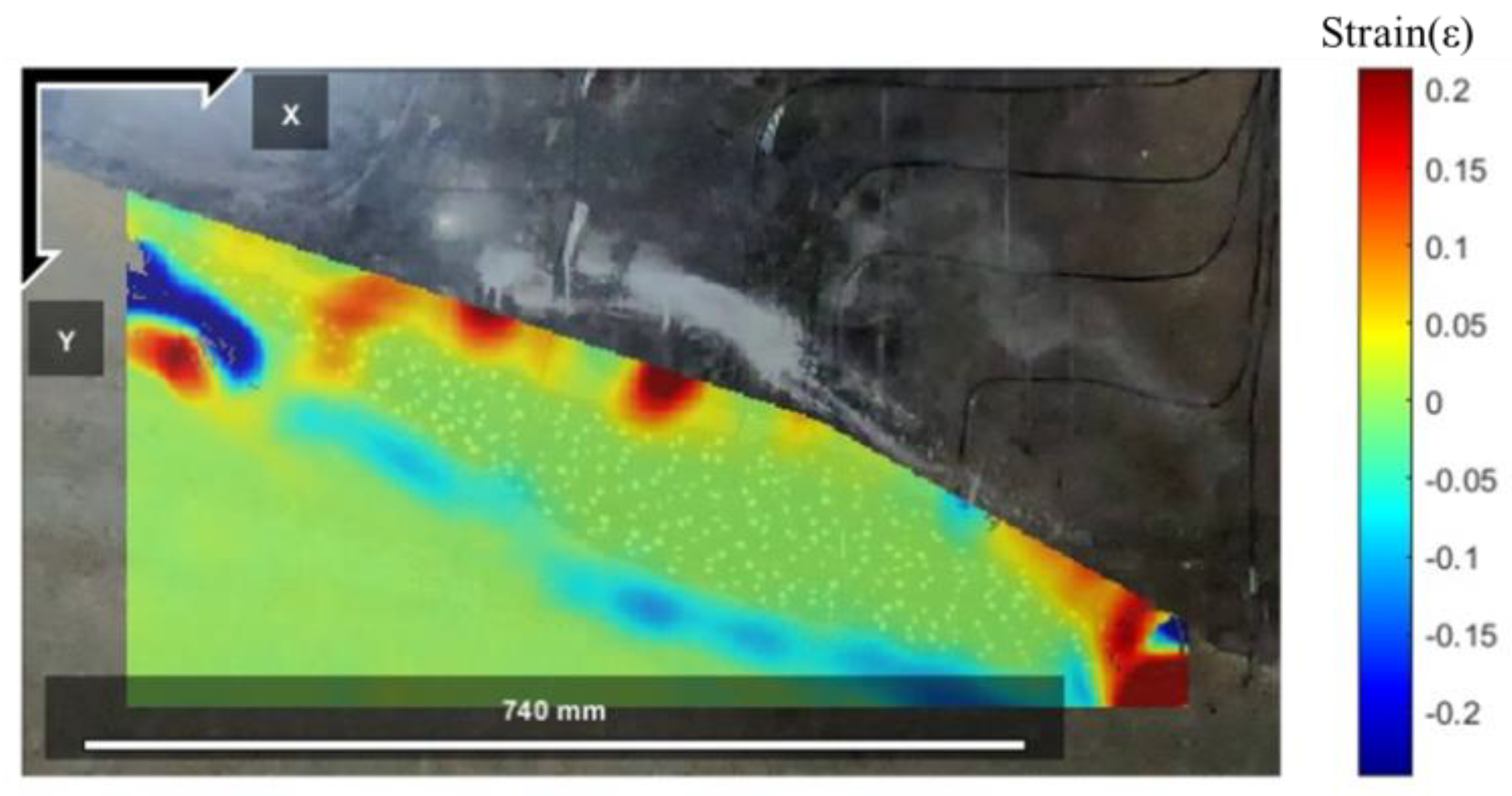
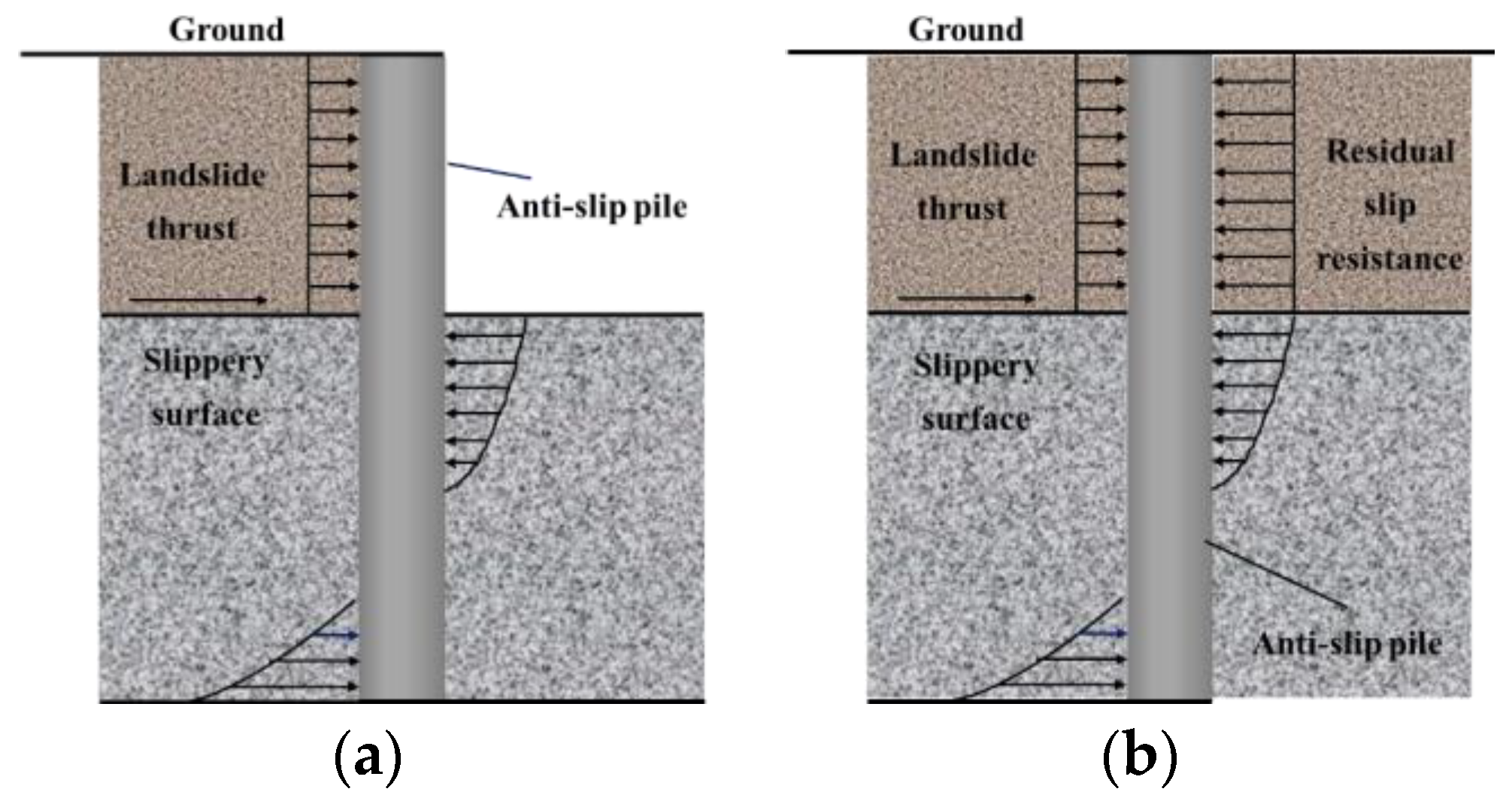

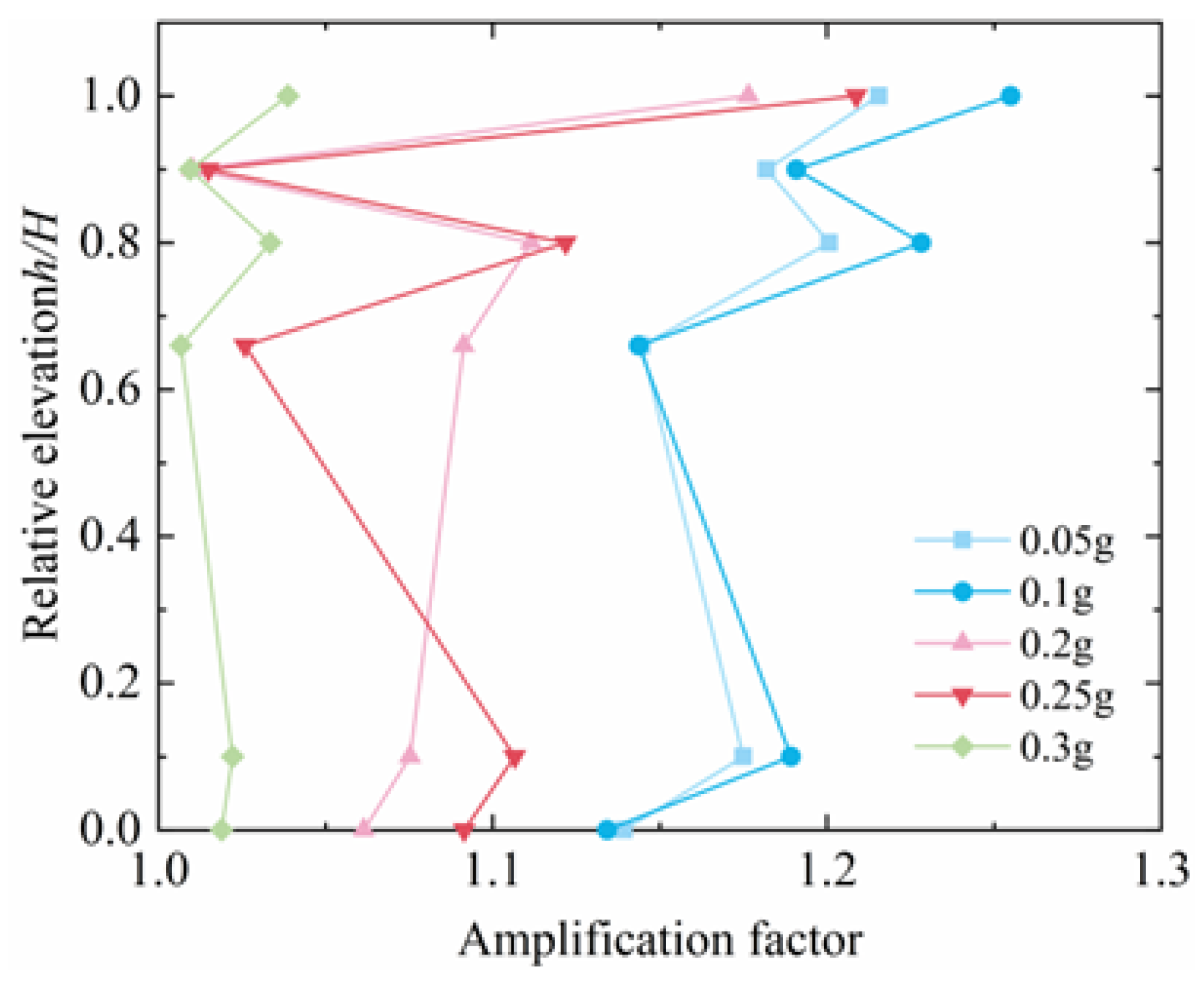
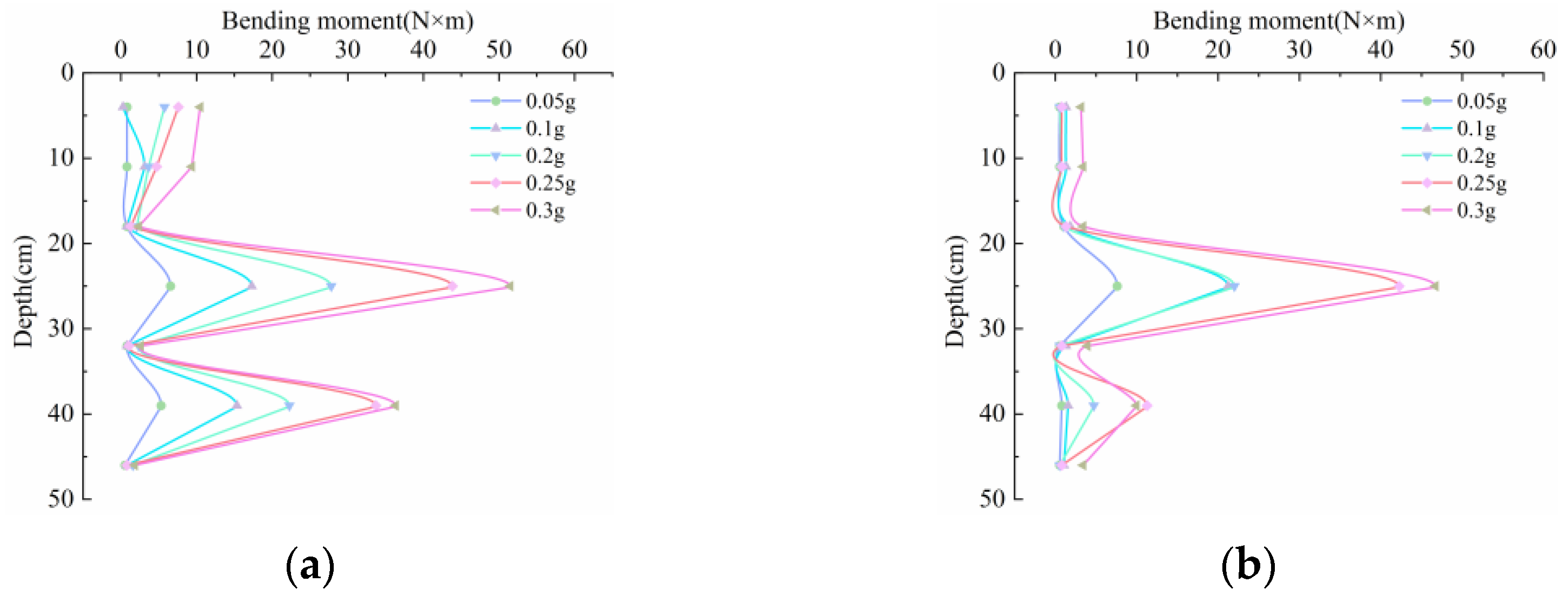




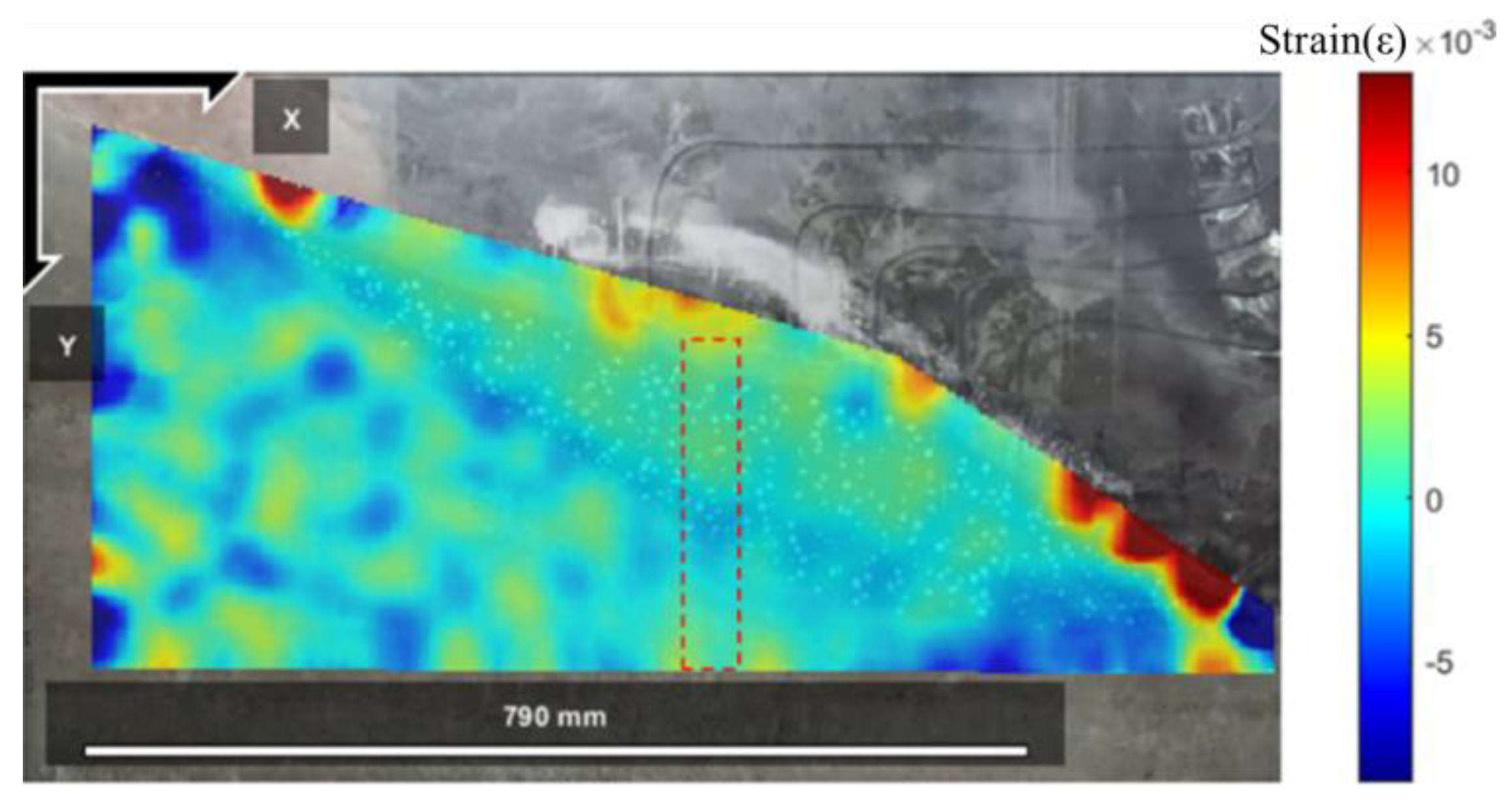

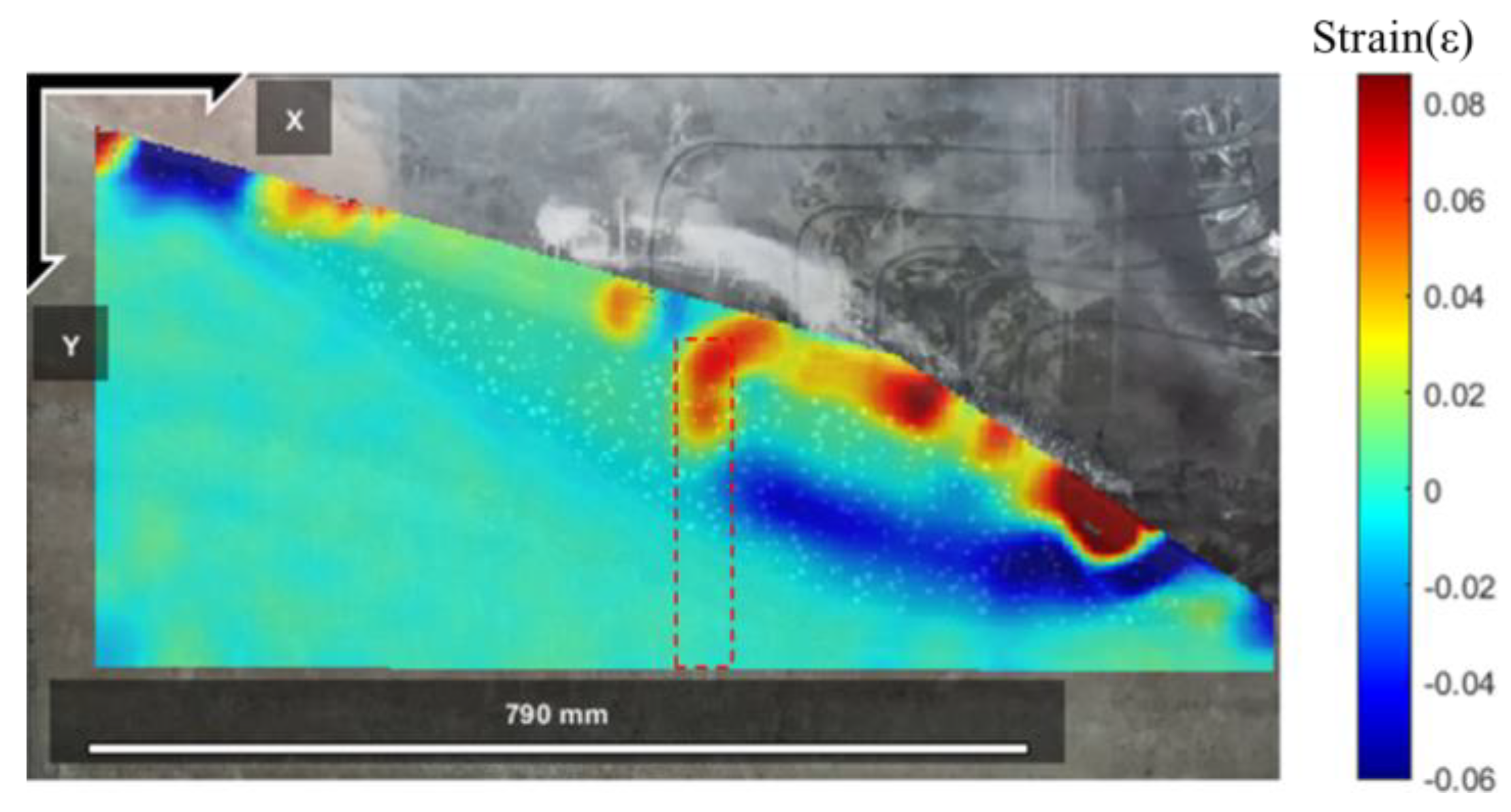



| Parameters | Resemblance | Similar Constant | Note |
|---|---|---|---|
| Cl | 100 | Control volume | |
| Cρ | 1 | Control volume | |
| Ca | 1 | Control volume | |
| Cφ | 1 | / | |
| Cc | 100 | / | |
| CE | 100 | / | |
| Cσ | 100 | / | |
| Cε | 1 | / | |
| Cg | 1 | / | |
| Cf | 1/10 | / | |
| Ct | 10 | / |
| Material Parameters | Water | Sand | Barite Powder | Cement | Gypsum | Bentonite |
|---|---|---|---|---|---|---|
| Bedrock | 9 | 54.2 | 23.2 | 6.8 | 6.8 | / |
| Accumulated layer | 6.8 | 69.8 | 14 | / | 4.7 | 4.7 |
| Material Parameters | E (MPa) | γ (kN/m3) | c (kPa) | φ (°) |
|---|---|---|---|---|
| Simulation of accumulated layer | 1.1 | 19 | 0.28 | 22 |
| Simulation of bedrock | 78 | 26 | / | / |
| Instrumentation | Specification | Photograph |
|---|---|---|
| GoPro camera | Function: Super Stabilization 4.0 Pixels: 23 million Frame rate: 120 FPS Resolution: 1–4 K |  |
| DH5922D dynamic collector | Power Requirements: 220 V ± 5% (50 Hz) Number of channels: 32 Sampling frequency: 10–100 K |  |
| SY-20 dynamic and static collector | Number of channels: 20 Measured strain range: ±19,999 με Maximum resolution: 1 με Dynamic maximum sampling frequency: 100 Hz | 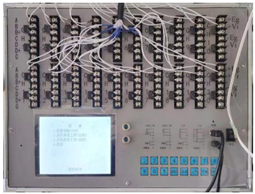 |
| IEPE accelerometer | Measurement Type: Voltage Measurement Input method: IEPE Sensitivity: 101.19 mV/m/s2 Range: ±5 g Frequency response: 0.2–1500 Hz |  |
| Anti-slide pile | Length: 0.5 m Diameter: 50 mm Material: Aluminum alloy | 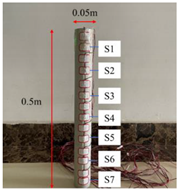 |
| Camera mount | Length: 50 cm Height: 45 cm Material: Aluminum alloy | 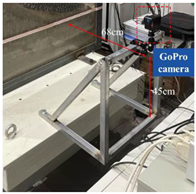 |
| Working Conditions | Input Wave | Peak Acceleration/g |
|---|---|---|
| 1 | Taft wave | 0.05 |
| 2 | 0.10 | |
| 3 | 0.20 | |
| 4 | 0.25 | |
| 5 | 0.30 | |
| Repeat the loading conditions from 1 to 5 until the slope destabilizes and destroys. | ||
Disclaimer/Publisher’s Note: The statements, opinions and data contained in all publications are solely those of the individual author(s) and contributor(s) and not of MDPI and/or the editor(s). MDPI and/or the editor(s) disclaim responsibility for any injury to people or property resulting from any ideas, methods, instructions or products referred to in the content. |
© 2023 by the authors. Licensee MDPI, Basel, Switzerland. This article is an open access article distributed under the terms and conditions of the Creative Commons Attribution (CC BY) license (https://creativecommons.org/licenses/by/4.0/).
Share and Cite
Xu, J.; Jia, Y.; Liu, J.; Asheghabadi, M.S.; Wang, Y. Study on the Stability of Accumulation Using a Slope Shaking Table Test during Earthquake Action. Buildings 2024, 14, 2. https://doi.org/10.3390/buildings14010002
Xu J, Jia Y, Liu J, Asheghabadi MS, Wang Y. Study on the Stability of Accumulation Using a Slope Shaking Table Test during Earthquake Action. Buildings. 2024; 14(1):2. https://doi.org/10.3390/buildings14010002
Chicago/Turabian StyleXu, Jianmin, Yuyue Jia, Junwei Liu, Mohsen Saleh Asheghabadi, and Yulin Wang. 2024. "Study on the Stability of Accumulation Using a Slope Shaking Table Test during Earthquake Action" Buildings 14, no. 1: 2. https://doi.org/10.3390/buildings14010002
APA StyleXu, J., Jia, Y., Liu, J., Asheghabadi, M. S., & Wang, Y. (2024). Study on the Stability of Accumulation Using a Slope Shaking Table Test during Earthquake Action. Buildings, 14(1), 2. https://doi.org/10.3390/buildings14010002





